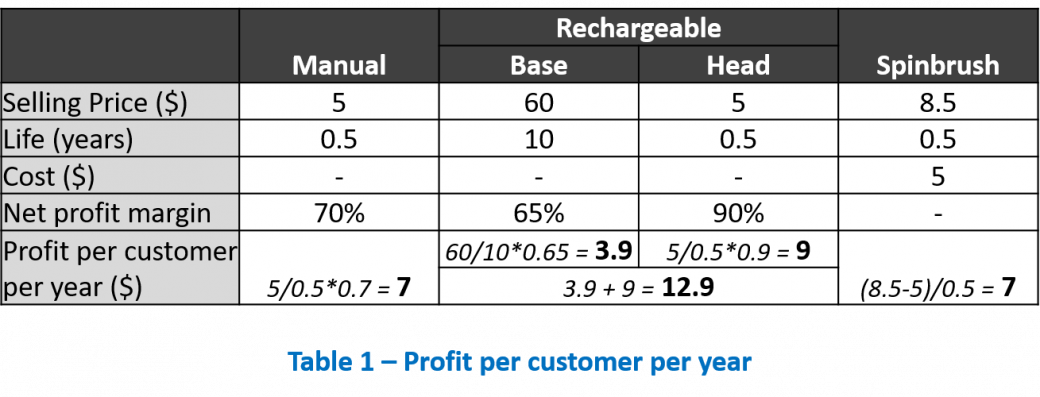Toothbrush disruption
13.5k
Times solved
Intermediate
Difficulty
We are a global toothbrush producing company. Our portfolio consists of two kinds of toothbrushes - 'manual' that sells for $5 and an electric 'rechargeable' that sells for $60.
Last year, a competitor introduced a battery-powered electric “spinbrush” that sells for $8.5 and now has 2% of the toothbrush market.
We don't have a similar offering and would like you to tell us whether we should develop a similar product or not.
Case Comments
I. Background
II. Analysis
III. Conclusion
13.5k
Times solved
Intermediate
Difficulty
Do you have questions on this case? Ask our community!

